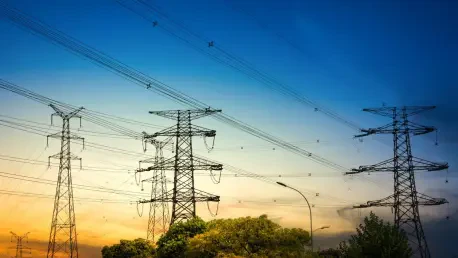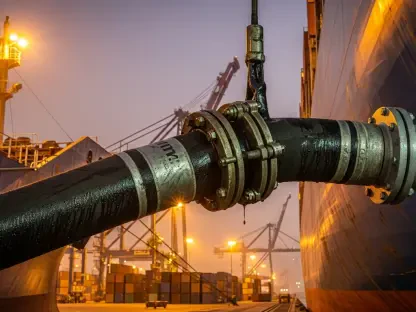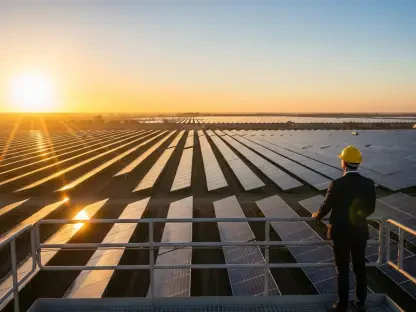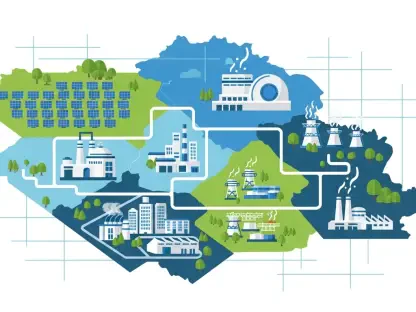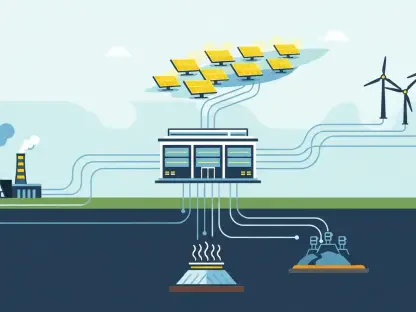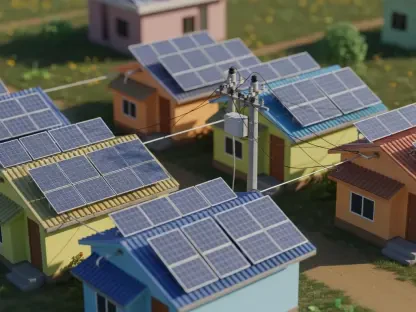Electrifying the Future: Why Copper Matters Now More Than Ever
In an era where global electricity needs are skyrocketing, copper stands as the unsung hero powering the digital and sustainable revolution. With annual investments in power grid infrastructure surpassing $400 billion, the metal’s role in transmitting electricity for data centers, renewable energy projects, and electric vehicles (EVs) has never been more critical. This market analysis dives into the escalating demand for copper, driven by structural shifts in global energy and technology sectors, and examines the supply challenges threatening to disrupt this momentum. The stakes are high: can the market adapt to these pressures, or will scarcity redefine the pace of progress in key industries?
Market Dynamics: Unraveling the Copper Demand Boom
Power Grid Investments as a Primary Catalyst
The copper market is witnessing a seismic shift, propelled by massive investments in global power grid modernization. Data from industry projections indicate that spending on grid infrastructure has hit record levels, driven by the urgent need to support expanding electricity demands. This surge is not a fleeting trend but a structural necessity, as digital economies and clean energy initiatives—such as wind and solar farms—require robust transmission networks. Copper, with its unmatched electrical conductivity, is central to this expansion, forming the backbone of transformers, wiring, and substations essential for reliable power delivery.
However, the scale of this investment underscores a pressing concern: supply may not keep pace with demand. Analysts forecast a widening deficit in the copper market, potentially reaching 1.84 million tons by 2030 if current production trends persist. Major producing regions face constraints due to underinvestment in new mining operations, creating a bottleneck that could hinder grid projects. This imbalance highlights the urgent need for strategic interventions to ensure that infrastructure growth aligns with societal and economic ambitions.
Sectoral Growth: Data Centers and EVs Leading the Charge
Beyond grid expansion, specific high-growth sectors are intensifying copper consumption at an unprecedented rate. Data centers, fueled by the rise of artificial intelligence (AI) and machine learning, are projected to see copper demand soar from modest levels to over 650,000 tons annually by 2030. The energy-intensive nature of these facilities necessitates vast amounts of copper for efficient power distribution, positioning the metal as a linchpin in the digital economy.
Similarly, the electric vehicle sector is driving significant demand, with projections estimating a jump to 2.2 million tons of copper usage by 2030 for batteries and wiring. As governments and manufacturers push for cleaner transportation solutions, the reliance on copper intensifies, further straining market resources. These sectoral spikes reveal a dual-edged reality: while they signal robust growth opportunities, they also expose vulnerabilities in supply chains that could stall advancements if not addressed proactively.
Supply Constraints and the Quest for Alternatives
Compounding the demand surge are persistent supply challenges that threaten to disrupt market stability. Key copper-producing regions, such as Chile and the Democratic Republic of Congo, grapple with declining output due to insufficient capital for new mines and geopolitical uncertainties. This scarcity is poised to push copper prices to historic highs, with forecasts suggesting a climb beyond $12,000 per ton by the decade’s end, a significant leap from current levels.
In response, industries are exploring alternatives to mitigate reliance on copper. Aluminum, priced at roughly one-third of copper, has been tested but often falls short in high-performance applications due to lower conductivity. Meanwhile, recycling offers a sustainable avenue, with recycled copper expected to reach 11 million tons by 2030, providing partial relief. Fiber optic cables have also gained traction in data transmission for their cost and bandwidth advantages, yet they cannot replace copper in power-heavy contexts. These efforts, while promising, underscore that copper’s unique properties remain largely irreplaceable for critical infrastructure needs.
Market Projections: What Lies Ahead for Copper
Long-Term Demand Trends Amid Digitalization and Decarbonization
Looking toward the future, copper demand is expected to remain robust as digitalization and decarbonization reshape global markets. The ongoing push for renewable energy infrastructure, coupled with the proliferation of data-driven technologies, ensures a steady need for the metal in power grids and beyond. Industry insights suggest that this structural demand will outstrip cyclical patterns of the past, creating a persistent market imbalance unless production capacity expands significantly.
Technological advancements could play a pivotal role in easing pressures. Innovations in grid design and enhanced recycling techniques are gaining attention as potential solutions to optimize copper usage. Additionally, economic factors, such as rising prices, may incentivize investment in untapped mining regions, though regulatory hurdles and environmental concerns could temper such developments. The interplay of these trends will likely define the market’s trajectory over the next several years.
Economic and Regulatory Influences on Supply Dynamics
Economic and regulatory landscapes are also shaping the copper market’s future. High prices, while a challenge for consumers, could spur exploration and extraction initiatives if paired with favorable policies. Governments in major economies are increasingly focused on sustainable mining practices, which may either constrain supply through stricter standards or encourage innovation in eco-friendly extraction methods. Balancing these priorities remains a complex task for policymakers.
Moreover, geopolitical tensions in key mining regions add layers of uncertainty to supply forecasts. Disruptions in production could exacerbate deficits, impacting industries reliant on steady copper inflows. Market participants must navigate these variables with agility, recognizing that long-term stability hinges on collaborative efforts between private sectors and regulatory bodies to address both resource scarcity and environmental goals.
Reflecting on the Copper Market Challenge
Reflecting on the analysis, it is evident that the copper market faces a transformative period marked by soaring demand from power grid expansions, data centers, and electric vehicles. The structural shift in consumption patterns, coupled with persistent supply constraints, paints a picture of a resource under immense strain. Projections of significant deficits and record-high prices by the decade’s end underscore the urgency of addressing these imbalances. Moving forward, stakeholders are encouraged to prioritize investments in sustainable mining and recycling initiatives as immediate steps to alleviate shortages. Exploring hybrid material solutions and fostering international partnerships to secure supply chains emerge as vital strategies to ensure resilience. Ultimately, the path ahead demands innovation and cooperation to safeguard the infrastructure critical to global economic and environmental aspirations.
